Top 10 Fall Vegetables to Extend the Harvest
Updated: Sep. 09, 2020
Some things are worth waiting for, like these tasty fall vegetables that can be harvested right up to the first frost—and beyond.
Extend your harvest when you plant these top fall vegetables! Some of these require longer growing seasons, while others can handle a little extra time in the ground while you deal with your abundance of summer tomatoes and zucchini. You’ll find lots of root vegetables on this list, along with squash and pumpkins, so prepare to enjoy a fall feast with these garden options.
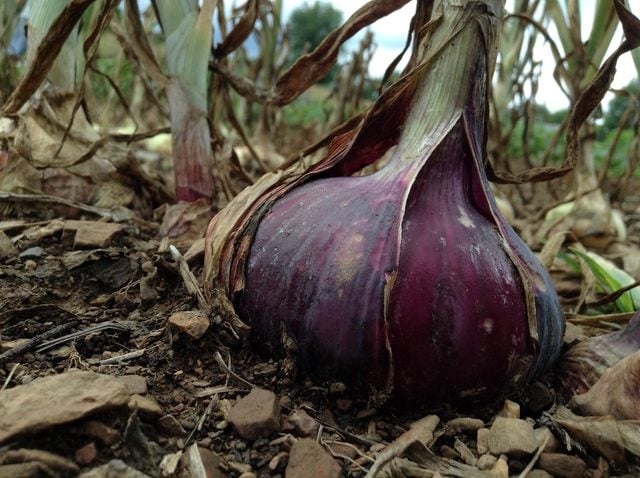
Onions
Allium cepa
A garden without onions? It’s enough to make you cry. Sweet or sharp, onions lend zesty flavor to everything from stews to salads. And what’s finer than a slice of raw onion on a hot-off-the-grill burger? Not much, in our humble opinion.
Planting advice: Onions grow slowly, so get best results from sets—small bulbs less than 1 inch in diameter (though onions grown from seed last longer in storage). Plant when soil is workable, about 1 inch deep and 1 inch apart for green onions and 2 to 4 inches apart for slicing onions; rows 12 to 18 inches apart.
Harvest Tips: Mature in 100 to 120 days. Pull green onions when tops are 6 inches tall; for larger onions, when tops fall over. Let onions dry on the soil for a day, then put them in a box in a sheltered spot for a few weeks. Then bring inside and store in a cool, dry place.
Top Picks: Bermuda, Red Baron, Sweet Spanish, Walla Walla Sweet, Vidalia Sweet.
Tasty Heirlooms: Alisa Craig, Borettanna Yellow, Long Red Florence, Red Wethersfield, Yellow of Parma
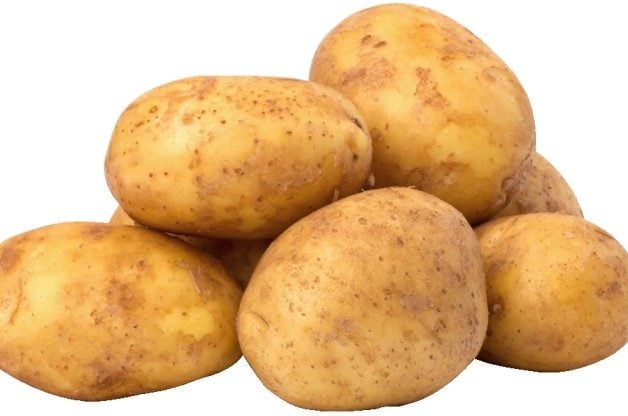
Potatoes
Solanum tuberosum
Mashed, baked, grilled or fried, potatoes are a staple for balanced, healthy meals. And they’re easier to grow than you might expect—and packed with fiber, minerals and nutrients. Just watch the butter and sour cream!
Planting Advice: Purchase disease-free seed potatoes for best results. Roughly six to eight weeks before the last frost date, or as soon as the soil is dry but workable, place either whole small potatoes or small pieces with at least one “eye” about 1 foot apart in a 1- to 4-inch-deep trench; space rows 2 feet apart. When shoots appear, cover with a ridge of soil.
Harvest Tips: Gently dig up tubers after the vines die; for “new” potatoes, dig earlier. Late-maturing varieties store better. Store in a cool, dark place with good air circulation. If eyes sprout, remove and move to a cooler location, or use immediately.
Top Picks: Norland (red skin, early harvest), Pontiac (red skin, summer harvest).
Tasty Heirlooms: All Blue, All Red, French Fingerling, German Butterball
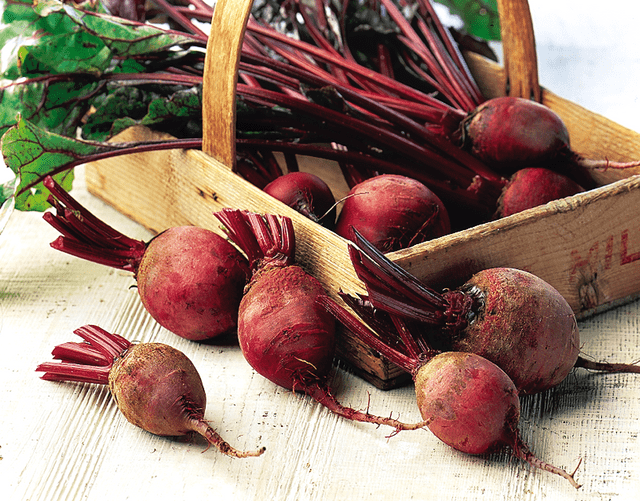
Beets
Beta vulgaris
No matter how you serve these sweet beauties— boiled, roasted, baked, pickled or in Russian borscht—you can’t beat beets for flavor and nutrition. Don’t waste the greens: Steam ’em, then toss with lemon juice and butter.
Planting Advice: A beet “seed” is actually a dried fruit that holds a bunch of seeds. Plant them in full sun and well-draining soil, about 30 days before the last frost date in spring, 1/2 inch deep and 1 inch apart, with rows 12 to 18 inches apart. Thin seedlings to one every 3 inches.
Harvest Tips: Beets mature in about 49 to 56 days. Pull mature fruits when they’re 11/2 to 3 inches in diameter. Store during winter in a bed of damp sand.
Top Picks: Early Bunch, Little Ball (miniature), Green Top Bunching, Crosby Egyptian (features tasty greens).
Tasty Heirlooms: Chioggia (candy-striped), White Albino (doesn’t stain!)
Discover the top 10 vegetables that grow well in shade.
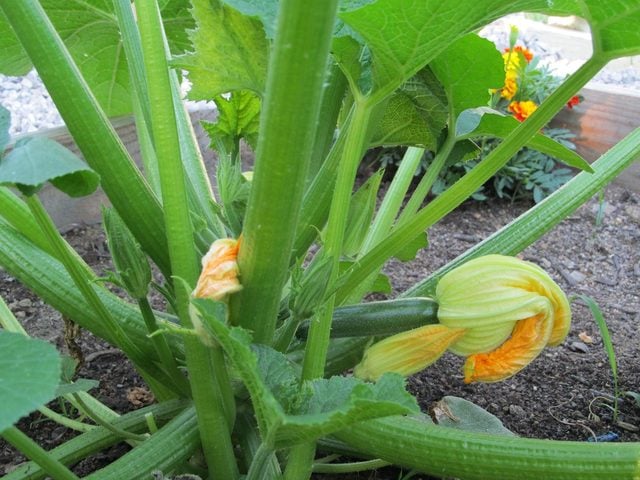
Squash
Cucurbita
There are two kinds of squash: summer and winter. Summer squash—like zucchini—are most tender and tasty when picked prior to maturation. Not so for hard-rind winter squash, such as acorn and butternut. But both kinds are serious allies for health- and taste-minded cooks.
Planting Advice: Squash require full sun and well-draining soil. For vining squash, sow four or five seeds in a 1-inch-tall hill after the threat of frost passes. When seedlings reach 2 or 3 inches tall, thin to two healthy seedlings per hill. For bush-type varieties, plant two to three seeds 1 inch deep every 24 to 36 inches, then thin to one plant every 24 to 36 inches.
Harvest Tips: Pick summer squash when fruits are 6 to 8 inches long and before they’re 2 inches in diameter (3 to 4 inches in diameter for pattypans and scallopinis). Pick frequently to promote greater yields. Winter squash take three or more months to mature. Pick when they turn a deep color and rinds resist easy puncture with a fingernail. Leave some stem attached.
Top Picks: Buttercup (winter), Cream of the Crop (winter acorn), Delicata (winter), Goldbar (summer straightneck), Peter Pan (scallopini), Stripetti (winter spaghetti), Sundance (summer crookneck), Table King (compact acorn winter bush).
Tasty Heirlooms:
Winter: Boston Marrow, Burgess Buttercup, Fordhook Acorn, Golden Hubbard, PA Dutch Crookneck, Turk’s Turban.
Summer: Summer Crookneck.
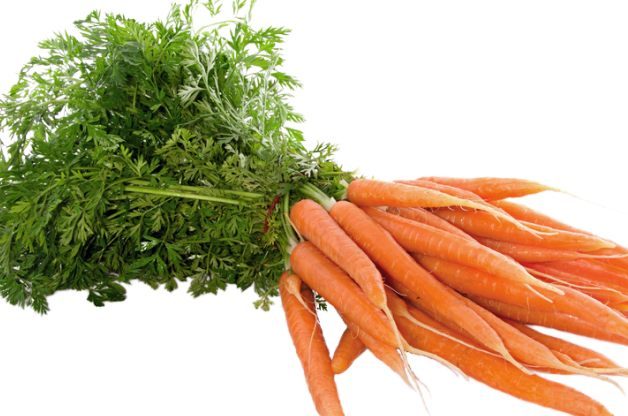
Carrots
Daucus carota var. sativus
Ironically, Mel Blanc, the voice of Bugs Bunny, didn’t care for carrots. What’s up with that? They’re packed with vitamin A—good for eyes and skin. And what about that satisfying crunch? Ahhh—it’s love at first bite.
Planting Advice: Three to four weeks before the last frost, sow seeds 1/4 to 1/2 inch deep, two to three per inch, in loose, well-draining soil; rows 1 to 11/2 feet apart. When sprouts are 1 inch tall, thin to two per inch for small varieties; one every 1 to 2 inches for larger carrots. To extend the harvest through fall, plant a new crop every three to four weeks until midsummer.
Harvest Tips: Ready to pick in 65 to 80 days. Harvest small varieties when roots are 1/2 inch in diameter, 1 inch for larger varieties. To store, cut off leafy tops 1 inch above roots and refrigerate.
Top Picks: Orbit (small round), Little Finger (baby), Red-Cored Chantenay, Danvers 126.
Tasty Heirlooms: Paris Market (round, reddish-orange), Scarlet Nantes, St. Valery
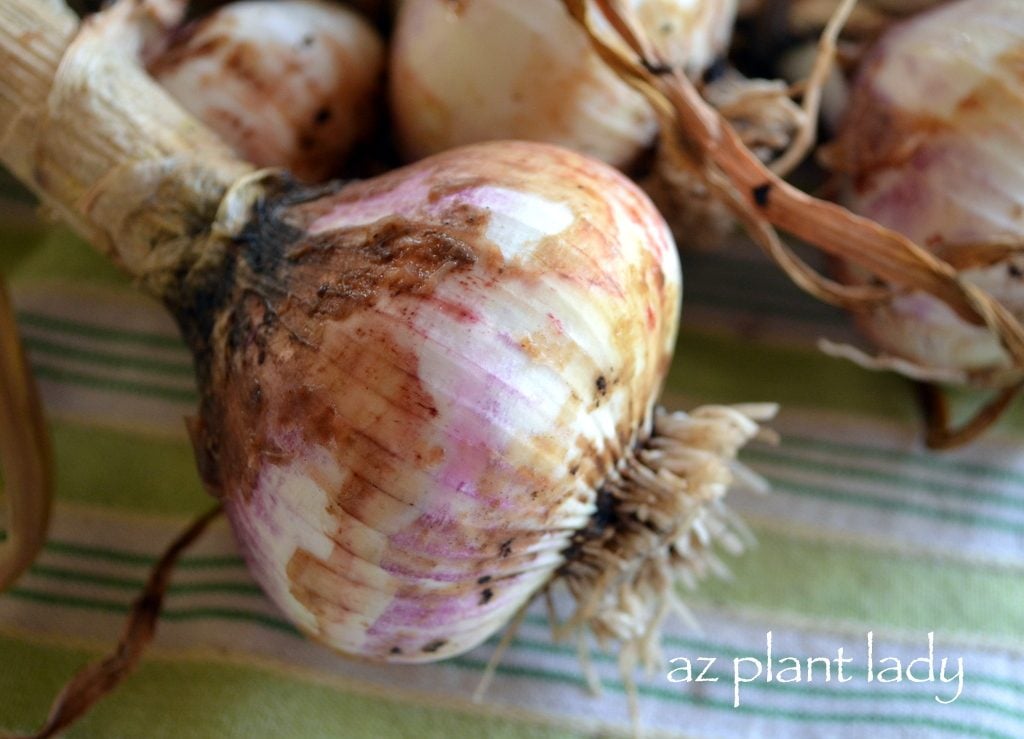
Garlic
Allium sativum
Greek athletes gobbled garlic before Olympic games for stamina. Modern-day studies prove them correct: Thanks to sulfur compounds, garlic is healthy—and, um, aromatic.
Planting Advice: In full sun and when soil is workable, plant individual cloves upright the depth of the bulb plus 1 inch of soil, 3 to 4 inches apart; rows 1 foot apart. In areas with short growing seasons, plant in late fall to grow larger bulbs for next-summer harvest. Cover with mulch over winter. Next growing season, cut off seed stalks to direct more energy to bulbs.
Harvest Tips: Harvest in about 100 days, when most leaves are brown. Gently dig up plants, with bulbs and leaves intact; dry for a few days, then tie in bundles and cure in well-ventilated area. Store in cool and relatively humid place.
Top Picks: Carpathian, Inchelium Red, Metechi, Idaho Silverskin.
Tasty Heirlooms: Broadleaf Czech, Georgian Crystal, German Extra Hardy, Shvelisi-Chesnok Red, Siberian
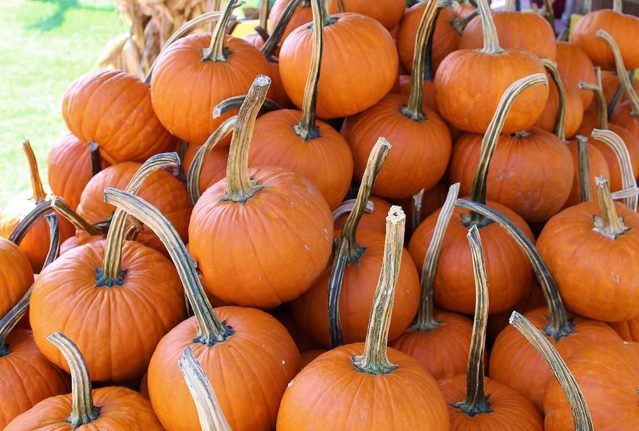
Pumpkin
Cucurbita spp.
Pumpkins are a triple threat: Toasted seeds provide a tasty, nutritious snack, the flesh is great for pies and the rinds become a canvas for Halloween artists. And with smaller varieties, tiny yards aren’t as much of a deterrent to growing these squash cousins. So carve out some space and let ’em grow.
Planting Advice: When frost danger passes, plant four or five seeds 1 inch deep in an 18-inch-high mound of soil. Keep hills 5 feet apart for vining pumpkins and 3 to 4 feet for semi-vining types. When seeds sprout, thin out to healthiest two or three.
Harvest Tips: Pick in 100 to 110 days, when they’re a deep, solid orange (for most varieties) and the rind is hard, usually late September or early October. Leave a 3- to 4-inch stem, which helps the fruit keep longer.
Top Picks: Autumn Gold, Baby Bear, Howden’s Field, Sweetie Pie (small fruit), Mammoth Gold.
Tasty Heirlooms: Amish Pie, Big Max, Casper (white), Fairy Tale, Green-Striped Cushaw, Long Island Cheese, New England Pie, Yellow of Paris
Learn 5 fascinating facts about pumpkins.
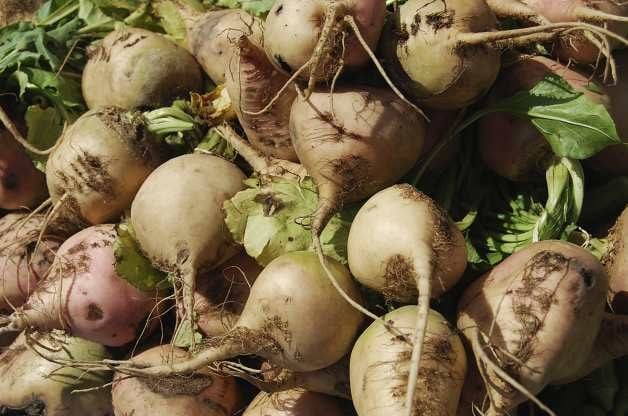
Rutubaga
Brassica napus
Larger, denser and sweeter than its root-veggie relative the turnip, these purple or creamy-brown palate-pleasers are actually a cross between a cabbage and a turnip. Also known as Swedish turnips, rutabagas are tasty in stews or as side dishes. Just for giggles, boil and mash some ’bagas, then blend them with mashed potatoes and ask dinner guests to guess the flavorful mystery ingredient. Good times, indeed!
Planting Advice: For summer harvest, plant seeds as soon as the soil is workable. For a fall harvest, plant roughly 100 days before the first expected frost. Sow seeds in full sun and well-draining, loose soil, 1/2 inch deep and 1 inch apart; keep 18 to 24 inches between rows.
Harvest Tips: Rutabagas mature in about 90 days. For optimal taste and tenderness, dig them up when they’re 3 to 5 inches in diameter. They’ll tolerate frost; in fact, when it comes to taste, cool weather sweetens the deal. Rutabagas keep well when refrigerated.
Top Picks: Altasweet, Improved Long Island, Pike.
Tasty Heirlooms: American Purple Top, Laurentian
Discover 5 common mistakes in the backyard vegetable garden.
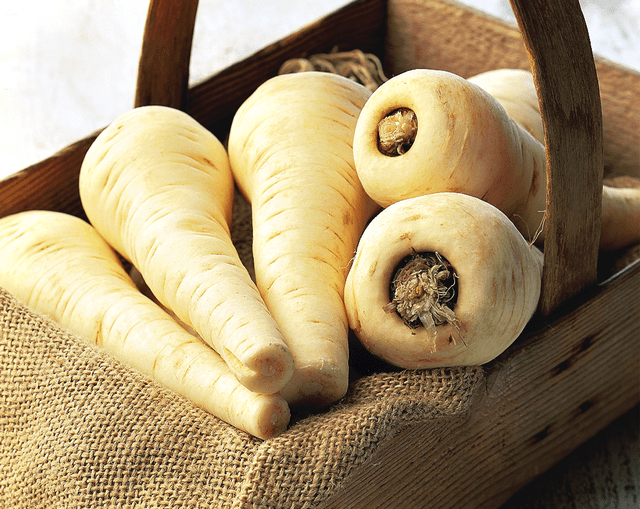
Parsnips
Pastinaca sativa
With their sweet, delicate flavor, these carrot cousins are great when grated in salads, added to soups and stews and served on the side—roasted, steamed or mashed. You can swap them for carrots in many recipes.
Planting Advice: Parsnips germinate poorly, so soak seeds for a day and sow thickly. To determine a planting date, count back 100 to 130 days from just after expected first-frost date. Plant seeds in full sun to light shade in well-draining soil, 1/2 inch deep; rows 18 to 24 inches apart. Thin to 3 to 6 inches apart.
Harvest Tips: Carefully use a spading fork to harvest when roots are 11/2 to 2 inches in diameter and 8 to 12 inches long; for best flavor, wait until 2 to 4 weeks after near-freezing temperatures occur, but before the ground freezes. Or cover with mulch for winter and harvest in spring, after ground thaws.
Top Picks: Andover, Cobham, Improved Marrow, Harris Model, Lancer.
Tasty Heirlooms: All American, Hollow Crown
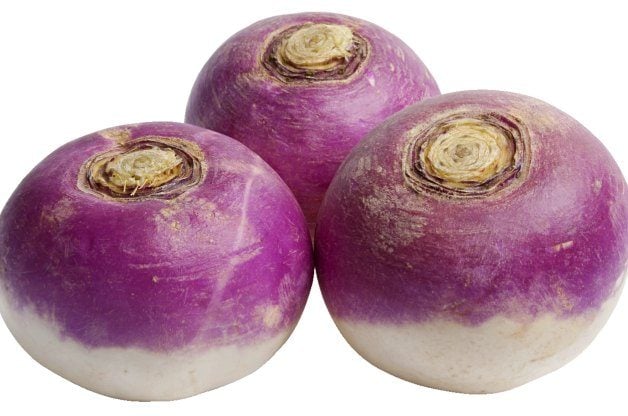
Turnips
Brassica rapa
Turnips are the vegetable world’s near equivalent of an all-in-one vitamin pill. They’re loaded with vitamin C—twice as much per serving as orange juice, as a matter of fact—as well as calcium, iron and thiamine. Even the greens are rich in vitamins and antioxidants. This veggie is fun to eat as a raw, crunchy relish; roasted; or boiled and mashed. Dig in!
Planting Advice: For summer harvest, plant seeds when soil is workable; for fall, about 80 days before first frost. Plant seeds densely in full sun and well-draining soil, 1/2 inch deep; rows 12 to 24 inches apart. When seedlings are 4 to 5 inches tall, thin to 2 to 4 inches apart.
Harvest Tips: Most turnips mature in 35 to 75 days. Harvest when they reach 2 to 3 inches in diameter. They tolerate fall frosts and become even sweeter in cool weather.
Top Picks: Gilfeather, Just Right, Scarlet Queen, White Night. Just for greens: Alltop, Shogoing, Topper.
Tasty Heirlooms: Golden Ball, Purple Top White Globe, Seven Top, White Egg




















